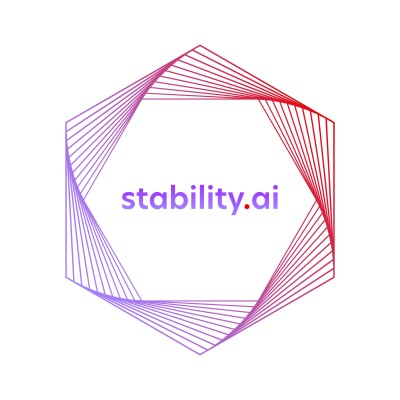The Rise of Webtoons: A New Era in Storytelling
April 23, 2025, 5:50 pm

Location: United States, California, San Francisco
Employees: 201-500
Founded date: 2015
Total raised: $58.21B
Webtoons have transformed from a niche interest to a global phenomenon. Originating in South Korea, these digital comics have captured hearts worldwide. They are not just comics; they are a new way to tell stories. The rise of webtoons is a testament to the power of technology and creativity.
At the heart of this trend is the vertical scroll format. It’s designed for mobile devices, making it easy to read on the go. This format has changed how people consume stories. No longer confined to pages, readers can scroll through vibrant worlds with a simple swipe. The experience is immersive, drawing readers into the narrative like never before.
Creating a webtoon is an art form. It requires more than just drawing skills. Artists must craft unique styles, design memorable characters, and build engaging worlds. They need to tell compelling stories with solid pacing. Each panel must flow seamlessly into the next, guiding the reader through the journey. Emotions play a crucial role. Artists tap into real-life experiences, making their stories relatable. Cultural references add depth, connecting with audiences on a personal level.
But the landscape is changing. Artificial intelligence (AI) is stepping into the creative arena. Tools like Midjourney and DALL·E can generate stunning images from simple prompts. They mimic styles and can even create short visual narratives. However, when it comes to crafting full webtoons, AI still has a long way to go.
AI struggles with consistency. Keeping characters looking the same across panels is a challenge. Understanding story flow and timing? That’s another hurdle. Capturing nuanced emotions and cultural subtleties? AI falls short. Complex layouts and dialogue often end up messy without human guidance.
Instead of viewing AI as a threat, many artists embrace it as a tool. It can handle backgrounds, allowing creators to focus on characters. AI can assist with rough sketches or color experimentation. It generates reference images for tricky angles. This collaboration can speed up the creative process, making it more efficient.
Moreover, AI opens doors for aspiring creators. Those without professional art skills can still tell their stories. It democratizes the art form, allowing more voices to be heard. This shift is significant. It means more diverse stories and perspectives in the webtoon landscape.
However, the journey isn’t without challenges. The webtoon industry is evolving. Platforms are figuring out how to credit AI-assisted work. They are exploring mixed teams of AI and human artists. New content types are emerging, raising questions about ethics and fairness.
One major concern is the crediting of AI-generated art. If AI learns from countless artists, who deserves recognition? Additionally, can AI portray different cultures respectfully? Without human oversight, the answer is uncertain.
What makes human art special? It’s the heart behind the creation. Real emotions, life experiences, and creative risks are irreplaceable. AI can replicate patterns, but it lacks the ability to create something truly original. The soul of a story remains a human trait.
As webtoons continue to grow, the connection between artists and readers is paramount. Fans are drawn to the artist’s voice, their unique style, and personal touches. These elements create a bond that AI cannot replicate. Readers want to feel something. If a story resonates, it doesn’t matter if AI played a role in its creation.
The future of webtoons is bright. Artists will likely use AI to enhance their work, not replace it. The best webtoons will still come from those with genuine stories to tell. With AI as a tool, creators can explore new possibilities. They can push boundaries and innovate in ways previously unimaginable.
In conclusion, webtoons are more than just a trend. They represent a new era in storytelling. As technology evolves, so does the art of narrative. The blend of human creativity and AI assistance is a powerful combination. It promises to reshape the landscape of comics and storytelling for years to come.
The heart of a story remains human. But with the right tools, those stories can reach new heights. Webtoons are here to stay, and they are just getting started. The journey ahead is filled with potential, waiting for artists to explore.
At the heart of this trend is the vertical scroll format. It’s designed for mobile devices, making it easy to read on the go. This format has changed how people consume stories. No longer confined to pages, readers can scroll through vibrant worlds with a simple swipe. The experience is immersive, drawing readers into the narrative like never before.
Creating a webtoon is an art form. It requires more than just drawing skills. Artists must craft unique styles, design memorable characters, and build engaging worlds. They need to tell compelling stories with solid pacing. Each panel must flow seamlessly into the next, guiding the reader through the journey. Emotions play a crucial role. Artists tap into real-life experiences, making their stories relatable. Cultural references add depth, connecting with audiences on a personal level.
But the landscape is changing. Artificial intelligence (AI) is stepping into the creative arena. Tools like Midjourney and DALL·E can generate stunning images from simple prompts. They mimic styles and can even create short visual narratives. However, when it comes to crafting full webtoons, AI still has a long way to go.
AI struggles with consistency. Keeping characters looking the same across panels is a challenge. Understanding story flow and timing? That’s another hurdle. Capturing nuanced emotions and cultural subtleties? AI falls short. Complex layouts and dialogue often end up messy without human guidance.
Instead of viewing AI as a threat, many artists embrace it as a tool. It can handle backgrounds, allowing creators to focus on characters. AI can assist with rough sketches or color experimentation. It generates reference images for tricky angles. This collaboration can speed up the creative process, making it more efficient.
Moreover, AI opens doors for aspiring creators. Those without professional art skills can still tell their stories. It democratizes the art form, allowing more voices to be heard. This shift is significant. It means more diverse stories and perspectives in the webtoon landscape.
However, the journey isn’t without challenges. The webtoon industry is evolving. Platforms are figuring out how to credit AI-assisted work. They are exploring mixed teams of AI and human artists. New content types are emerging, raising questions about ethics and fairness.
One major concern is the crediting of AI-generated art. If AI learns from countless artists, who deserves recognition? Additionally, can AI portray different cultures respectfully? Without human oversight, the answer is uncertain.
What makes human art special? It’s the heart behind the creation. Real emotions, life experiences, and creative risks are irreplaceable. AI can replicate patterns, but it lacks the ability to create something truly original. The soul of a story remains a human trait.
As webtoons continue to grow, the connection between artists and readers is paramount. Fans are drawn to the artist’s voice, their unique style, and personal touches. These elements create a bond that AI cannot replicate. Readers want to feel something. If a story resonates, it doesn’t matter if AI played a role in its creation.
The future of webtoons is bright. Artists will likely use AI to enhance their work, not replace it. The best webtoons will still come from those with genuine stories to tell. With AI as a tool, creators can explore new possibilities. They can push boundaries and innovate in ways previously unimaginable.
In conclusion, webtoons are more than just a trend. They represent a new era in storytelling. As technology evolves, so does the art of narrative. The blend of human creativity and AI assistance is a powerful combination. It promises to reshape the landscape of comics and storytelling for years to come.
The heart of a story remains human. But with the right tools, those stories can reach new heights. Webtoons are here to stay, and they are just getting started. The journey ahead is filled with potential, waiting for artists to explore.
